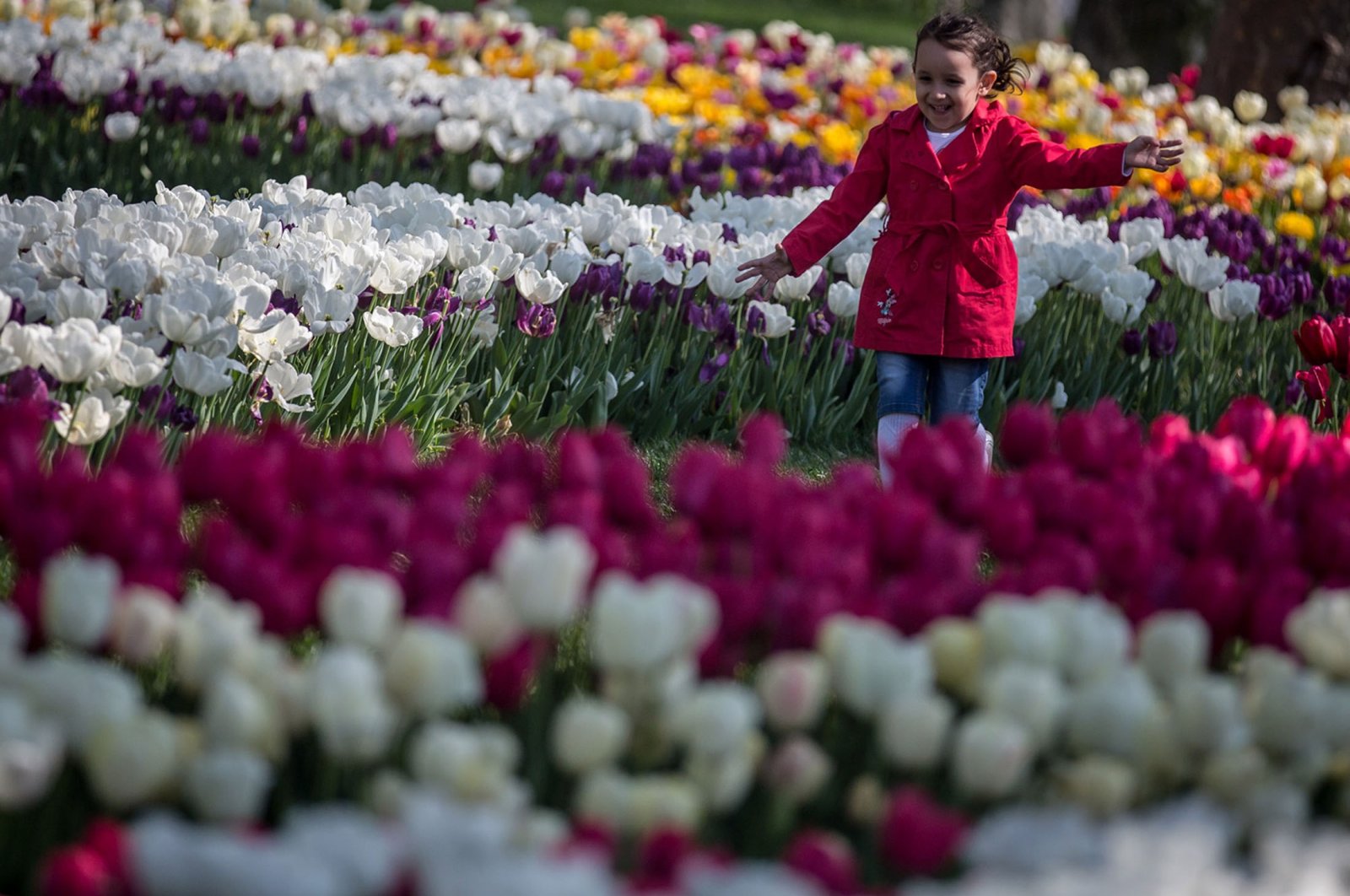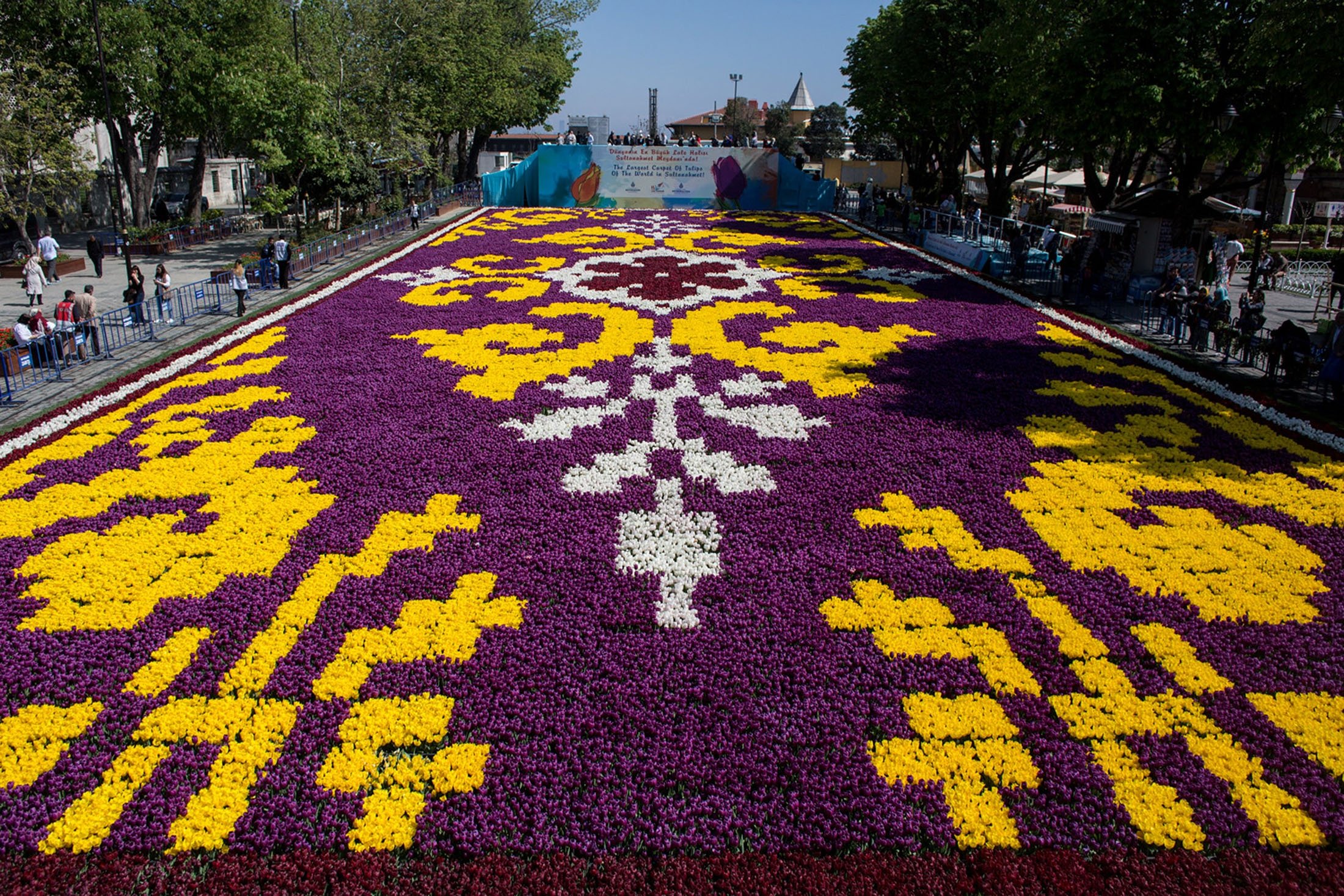
How would you like to taste the delicious herbs of the Aegean, see the colorful tulips of Istanbul, try the traditional mesir paste of Manisa or jump over the Kakava fire lit in Edirne by participating in the festivities held to welcome spring in Türkiye?
With the arrival of spring, as the weather begins to warm up slowly, we feel agitated as the sun shows its face. They say that season doesn't matter for travelers, but when spring comes and summer approaches, people want to go on the road, embrace nature, explore different cities and participate in fun organizations in other cities. In many world cities, fun festivals are organized to celebrate the arrival of spring; the same goes for the towns in Türkiye.
In Türkiye, different festivals and organizations are held in many cities to welcome spring and relieve the sluggishness of winter. So let's find out when and where you should turn your route to witness the fun moments in these events that occur throughout April and May and enthusiastically welcome spring.
Istanbul's tulips
Istanbul, one of the world's most important cities, welcomes spring's arrival with beautiful tulips. Although the main center of the tulip festival is Emirgan Park, you can see tulips blooming in various parts of Istanbul, offering fascinating views. While the multiple patterns created with tulips in Emirgan attract attention, if you turn your route to Emirgan Grove, Sultanahmet Square, and 60th Year Park on the Anatolian side, you can see the beautiful views with the colorful tulips surrounding the city. Although the festival is officially between April 1 and 30, you can see tulips in Istanbul until the first few weeks of May.

Manisa's mesir
The mesir macunu festival, held in Manisa every year in April, is planned to start on April 26. Mesir is a traditional Turkish sweet associated with the city of Manisa. Macun is a sweet Turkish confectionery toffee paste originating from the spicy preparations of Mesir macunu. The festival, which traditionally ends with the distribution of mesir paste from the Sultan Mosque to the public, will end with this event on Sunday, April 30.
The distribution of mesir paste from the mosque's minaret to the public is based on a historical event. Hafsa Sultan, the wife of the Ottoman Sultan Selim I, suffered a medical condition while in Manisa. Merkez Efendi – an Ottoman Islamic scholar and Sufi – who was the head of the Sultan Mosque madrasah then, made a paste that healed Hafsa Sultan by mixing 41 spices and herbs. Hafsa Sultan, who regained her health, wanted this paste given to all patients. As the demand for paste increased, pastes were wrapped in paper and would be scattered from the minaret of the Sultan Mosque. From that day on, the people would gather in front of the mosque on the same day every year, and thus the Manisa Mesir Paste Festival was born. This is why mesir paste is distributed from the mosque's minaret on the festival's last day. The festival, where various cultural and sports activities are exhibited, is on the list of UNESCO's Intangible Cultural Heritages of the World.
International Orange Blossom Carnival
Orange and citrus cultivation are important in Adana, one of the most beautiful cities in the Mediterranean region. The orange flowers that open every year with the approach of spring are considered the symbol of fertility and an orange blossom carnival is held every year in April. The sweet bustle that started in Adana with the arrival of spring is crowned with the International Orange Blossom Carnival.
Known with the slogan "April in Adana," the carnival is considered Türkiye's first street carnival. During the carnival, dance performances, concerts and fun events are held. Unfortunately, the 11th edition of the carnival, which people attend with their colorful, fun and extraordinary costumes, will not be held this year out of respect for those lost in the Feb. 6 earthquakes and flood disasters. So don't forget to add this delightful carnival to your list for next year.
Izmir's artichoke festival
When the Aegean region is mentioned in Türkiye, healthy herbs and artichokes rarely come to mind. The Urla district of Izmir, where Cynara, or artichokes, is grown the most in the region, hosts an artichocke every year with the arrival of spring. While the artichokes, an essential food for Urla, are promoted at the festival, workshops are held on how to turn Cynara into different dishes.
In addition, the Urla Gum Cynara is a food registered with distinctive features protected by local geographical indications, taking its name from mythology. Legend has it that Zeus fell in love with a girl named Cynara. He took her to Olympos to live together. After a specific time, Cynara yearned for her own life; one day, she secretly visited where she used to live. Zeus got angry, transformed Cynara into a plant, and threw her to the earth.
You can eat this legendary food, which has been proven by scientific studies to relax the liver because of the cynarin substance in it, which increases the functioning of the gallbladder, in different ways at the festival, which also includes concerts.
Edirne's Kakava celebrations
Let me take you to where spring is most colorful and enthusiastic: Edirne, considered Thrace's capital. The festivities, held every year on May 5-6, are the stage of quite bright scenes. The festival, where fun and different rituals are performed, starts with the burning of the Kakava Fire on May 5. Then, people dance around the lit fire and jump over it to eliminate evil spirits.
In these festivals, also known as the celebration of Hıdrellez, the wishes are written at the bottom of the rose tree, symbolizing the moment when the Prophets Hızır and Ilyas, who are believed to bring fertility and healing, met at the bottom of the rose tree. The next day, in the early morning hours, people gather on the banks of the Tunca River and wait for the mythological hero Babafingo. You can immerse yourself in the rhythm of the music as you see people picnicking and dancing along the coast. The Kakava Festival is the correct address for those who want to welcome spring with different rituals, dancing and fun.
